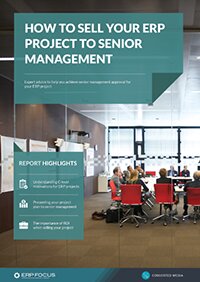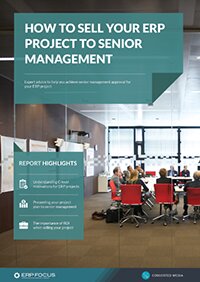Five ERP metrics to show c-suite you need new software
Anytime an IT manager prepares to defend the purchase of a new ERP system, they should ensure that every available ERP metric tool is ready for deployment. If anything else, this awareness should generally apply, since most, if not all, C-level executives simply hate spending money on new technology.
However, if a particular business specification involves the migration from a current system to a new and improved variant, that effort will involve even deeper challenges relating to change management. In this case, a straightforward ‘more money; more bang’ business proposition suddenly involves rationales relating to workforce re-organization/re-education, in addition to the potential loss of empirical control at an operating level.
For the IT manager, then, before you show up at your C-level’s door hat in hand, it’s probably best to execute and apply more, rather than less, analytic metrics to your proposal, in order to ensure that you make the best case possible. Consequently, here are five ERP metrics that make your purchase argument more substantive.
1. Reduced production efficiencies
If you find your company experiencing lost time at the production level, this suggests that either you have an error in your baseline metrics, or you are over-running your system’s current capabilities. This characteristic should not be seen as a panacea; however, when applied in concert with similar negative measurements it can make a useful part of a purchase rationale.
2. Creeping slowdowns in operational cycles
In similarity with reduced production efficiencies, this ERP performance metric suggests reduced operational viability. In turn, this bit of analytic investigation can serve as another bit of ‘bad news’ that you can applied when attempting to establish a new system justification.
3. Irregular or intermittent business forecasts
This metric result represents a further weakening of a system’s ability to develop and properly account for its total number of data channels. Again, in concert with other performance calculations, this marginalization suggests that the system is reaching the end of its useful life cycle, and that a new ERP purchase is necessary.
4. Largely unnoticed schedule slips
Most of today’s systems apply rule or policy-based processes that establish baseline production schedules. If your system is spontaneously slipping schedules, or expected schedule elements are irregular, this offers an indication that the system may be overloaded or maximized at a data processing level.
5. Indirect cost spirals
This is another indication that ERP performance metrics are becoming frangible or beyond a system’s ability to handle the density of required data. Since most ERP systems operate on the basis of cost alerts that keep managers and production operators within budget, should the system begin to calculate slight errors, something is wrong. If that ‘wrong thing’ is being driven by too much process data, this is yet another indicator that a new system will be required sooner rather than later.
In the end of the day, these metrics are only some of the numerous bits of analysis that can find its way into a purchase proposal, and in this case, when going up the org chart it’s better to throw too much, rather too little information, to the effort if you want to ensure that you won’t have to go back again in the near-future.
Free white paper

How to sell your ERP project to senior management
Expert advice to help you achieve approval and funding for your ERP project

Featured white papers
-

How to sell your ERP project to senior management
Expert advice to help you achieve approval and funding for your ERP project
Download
Related articles
-
![3 Tips for Achieving Buy-In for Your ERP Integration [by pressfoto on Freepik] 3 Tips for Achieving Buy-In for Your ERP Integration [by pressfoto on Freepik]](/pictures/W1siZiIsIjIwMjQvMTAvMjkvNnQyNmRwdzdwYl8zX1RpcHNfZm9yX0FjaGlldmluZ19CdXlfSW5fZm9yX1lvdXJfRVJQX0ludGVncmF0aW9uX2J5X3ByZXNzZm90b19vbl9GcmVlcGlrXy5qcGciXSxbInAiLCJ0aHVtYiIsIjQwMHgyNjYjIl0sWyJwIiwiZW5jb2RlIiwianBnIiwiLXF1YWxpdHkgODUiXV0/3%20Tips%20for%20Achieving%20Buy-In%20for%20Your%20ERP%20Integration%20%5Bby%20pressfoto%20on%20Freepik%5D.jpg?sha=0e1a55a6cfcac344)
3 tips for achieving buy-in for your ERP integration
Read our expert’s tips on getting your ERP integration project off the ground by achieving busine...
-

CMMC Compliance: What Aerospace and Defense Manufacturers Need to Know
Key insights on CMMC compliance, deadlines, and securing DoD contracts with CMMC 2.0 certificatio...
-

How senior executive acceptance of ERP promotes cultural transformation
How senior management can steer and improve ERP transforming businesses

